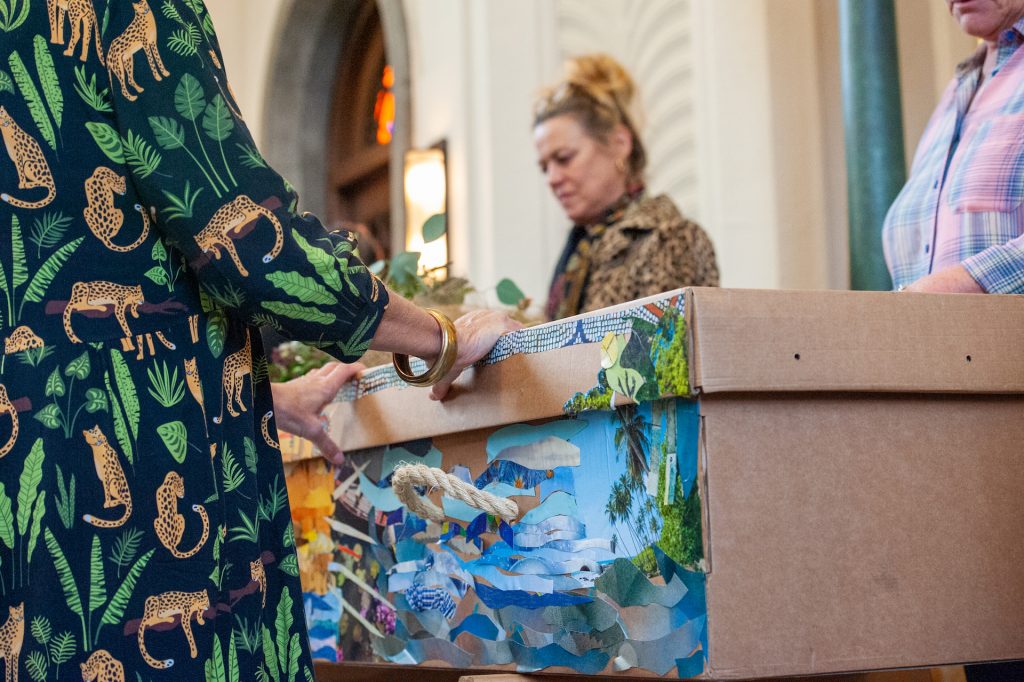
Coffins and home funerals
If you are organising a cremation, check with the crematorium to find out if they have any specific requirements.
For example, some crematoria will allow shrouded bodies to be cremated, others will not; some will permit coffins made by families, others will only allow quality assured and certified coffins produced by trade manufacturers.
Once you know what type of coffin or shroud you are permitted, choose the type you want from a supplier who is prepared to sell directly to the public.
You will need to make sure you order the correct size, so you’ll need to measure the height of the person who has died, and also the width of their body at the widest part (usually the shoulders). Make sure that the supplier can guarantee delivery by the day before the funeral at the latest.
Ensure that you order ‘load-bearing handles’ on whichever coffin you choose. If you are going to have to manoeuvre a coffin out from a bedroom and downstairs you will need to be able to use the handles to do so, likewise it will make moving the coffin during the funeral much easier than trying to do so with handles that are purely decorative.
Placing the person in their coffin
You’ll need several people to help you with this. The simplest and safest way to transfer someone from a bed into a coffin is to place the coffin on the floor next to the bed and use the bedsheet that the person is laying on to lift them and move them across into the coffin. Tuck the sheet under them. The sheet and pillow can remain in place in the coffin. (If the person is being buried in a natural burial ground, make sure that all materials are natural and not man made).

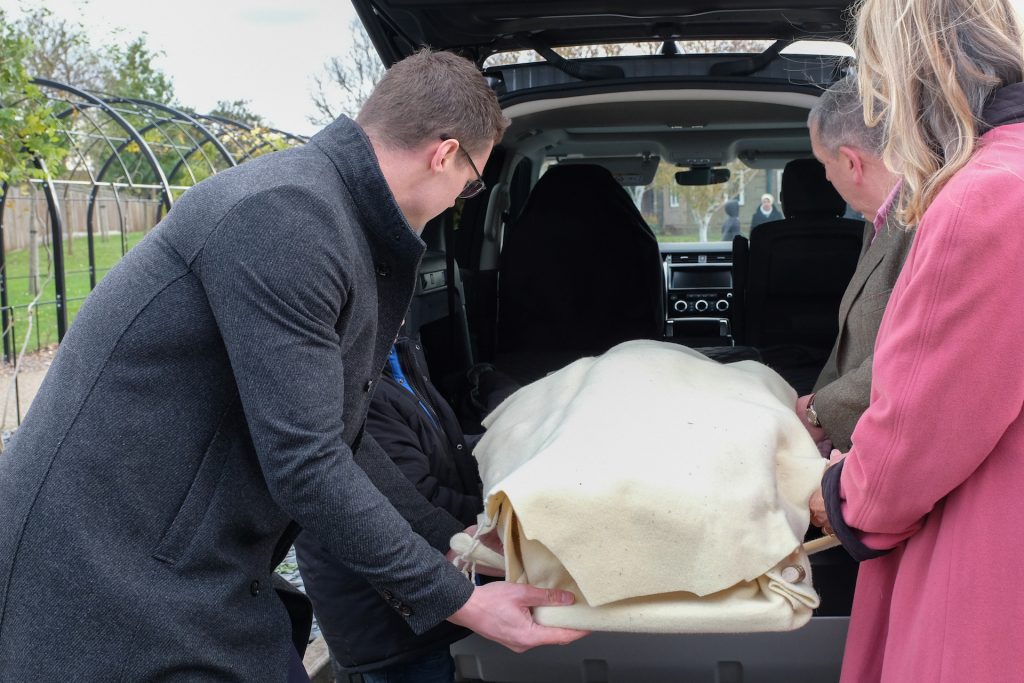
Transporting the coffin to the venue
If you are using a vehicle that hasn’t been adapted for carrying coffins you may find it useful to have two pieces of dowelling positioned inside to help roll the coffin in and out. If there is a lot of room between the coffin and the tailgate of the car it would be wise to add a cushion or some padding to prevent the coffin moving when the vehicle brakes. Ensure that the tailgate is firmly closed, and if the vehicle doesn’t have automatic central locking, ensure that the tailgate is locked.
Traditionally, coffins are transported with the foot end first, both when they are in vehicles and being carried by bearers.
Carrying the coffin
Coffins don’t need to be lifted onto shoulders, they can be carried by the handles by people of all ages, including children. Simply ensure that you have four or six people who are willing to carry the coffin, line them up in two rows at the rear of your vehicle, with the strongest people furthest away (they will be carrying the ‘head end’ of the coffin where most of the weight of the person will be felt).
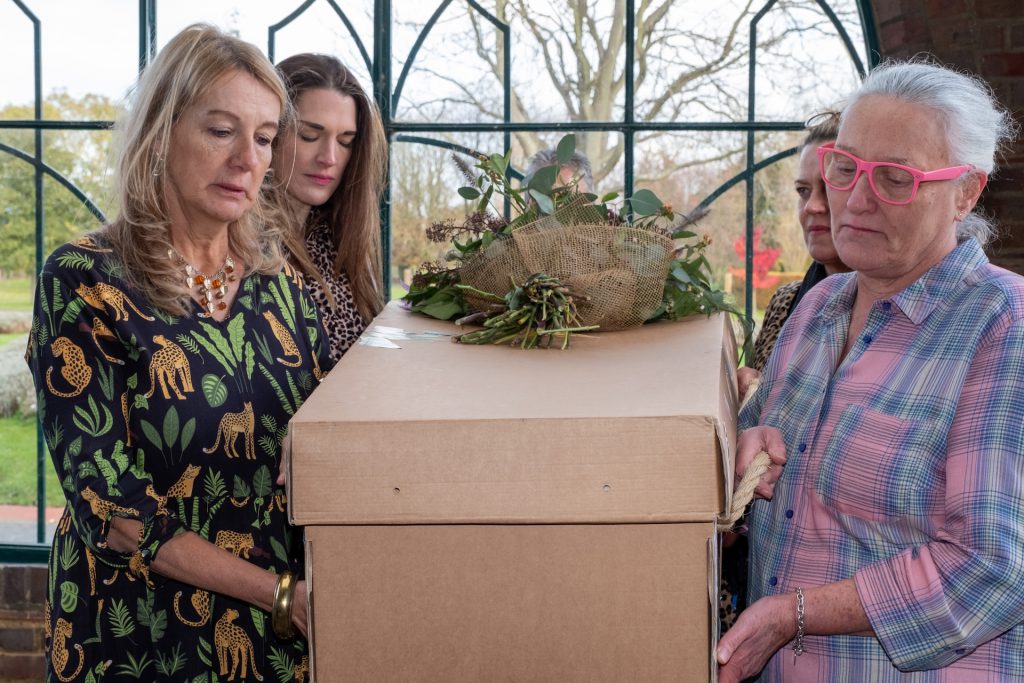
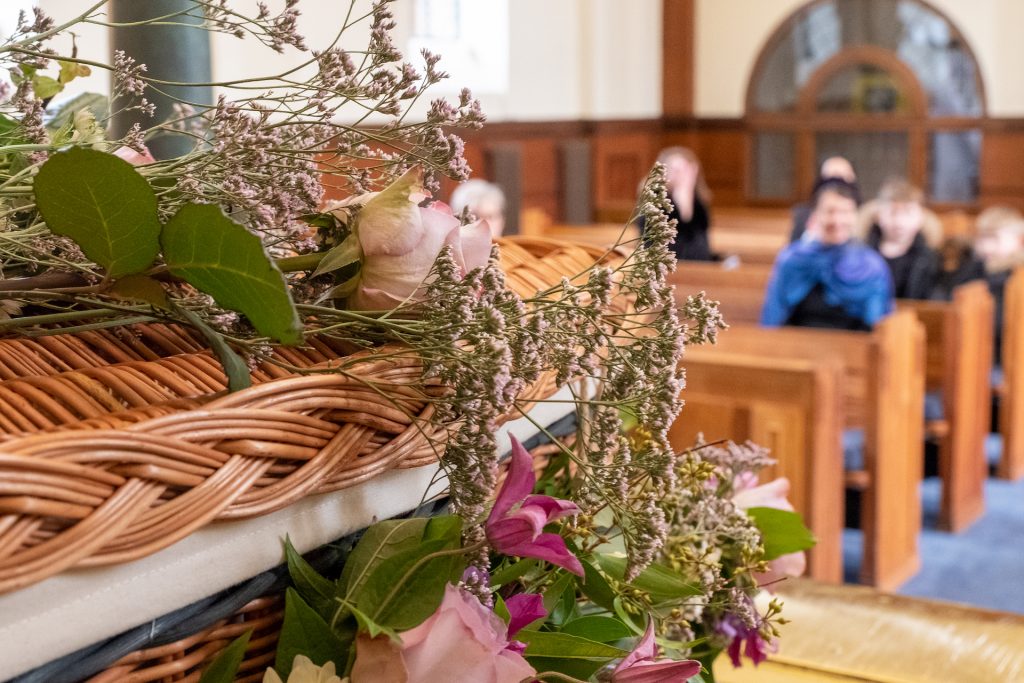
Lifting the coffin
At some crematoria, the coffin will need to be lifted onto the catafalque. This is most easily done with extra assistance, one person stepping forward to help with the weight at the head end. This person should guide the others by giving verbal instructions, e.g. ‘one, two, three lift’ and then together, everyone should use their free hand to support the weight of the coffin underneath and lift it onto the catafalque, foot first, adjusting it so that it moves onto the rollers and is straight.
Lowering the coffin
When the funeral is a burial, the knack is to take everything slowly. There may be personnel from the burial ground present to advise and assist, and they will be able to give guidance to the people carrying the coffin. If this is not available, then the people carrying the coffin will need to assess the situation and work out the best approach. Leave the coffin on the vehicle while this is done.
If there is an officiant or minister, discuss with them how they want the burial to proceed, i.e. will the coffin be lowered into the grave straight away, or will it rest on the timbers over the grave while the final words are said? Once everyone is satisfied that they know what they are doing, then return to the vehicle to collect the coffin.
Generally, the grave will have a large heap of soil to one side and boards will have been placed around the edges, with pieces of timber either across the grave or to one side, and rolls of strapping which may have been set out ready across the grave or placed next to it. If the grave is amongst other graves, the route to reach the grave with the coffin will need to be planned to avoid walking across others who have been buried there. Check for any trip hazards or uneven ground.
Manoeuvering a coffin into position over an open grave is often easier if it is done using the strapping (or webbing), particularly if it is wet and the boards by the grave are slippery. Where this is the preferred choice, the strapping should be placed out ready for the coffin to be put down onto it, with the excess ready to be looped up through the handles either side. The two straps should be laid on the ground around a metre apart so that the coffin can be laid onto them aligning the straps with the handles. Unroll the two rolls exposing the centre of the strapping so that there is space for the coffin to be placed onto it with the remainder in neat rolls either side.
Ideally if there is access to the grave from the head end, the strapping should be laid out here, so that once the straps are in place, the coffin can then be lifted by the strapping and carried straight on to the timbers to rest above the grave.
The coffin should be carried towards the grave feet first, then, depending on the alignment of the grave, it may need to be turned around so that the head is at the correct end. Where possible, approach the grave so that this is not necessary.
If it is not possible to place the coffin on to the strapping beforehand, then the straps should be laid across the grave adjacent to the timbers, with equal amounts of excess on each side neatly rolled. The bearers should then carefully walk on to the boards carrying the coffin by the handles, lowering it onto the timbers. The strapping should then be threaded up through the handles, taking care not to tangle the timbers up in the process.
The bearers can then either remain standing at the graveside holding the strapping while the final words are said or stand back so that the view of the coffin isn’t obscured.
Once the moment has come for the coffin to be lowered, all bearers should take hold of the strapping with their dominant hand, with the other hand ready to carefully feed the excess strapping. The strapping should not be wrapped around the bearers’ hands. The strapping should be unrolled and laid to the side of / behind each bearer
On the guidance of one person, everyone should take the weight of the coffin on the strapping together, lifting it a few centimetres off of the timbers, allowing a helper to pull the timbers out and away from the grave.
Again, on the guidance of one person, the bearers should then gradually allow the strapping to ease through their hands, allowing gravity to settle the coffin to the bottom of the grave.
The strapping should then be laid down on the boards and the bearers can step away.
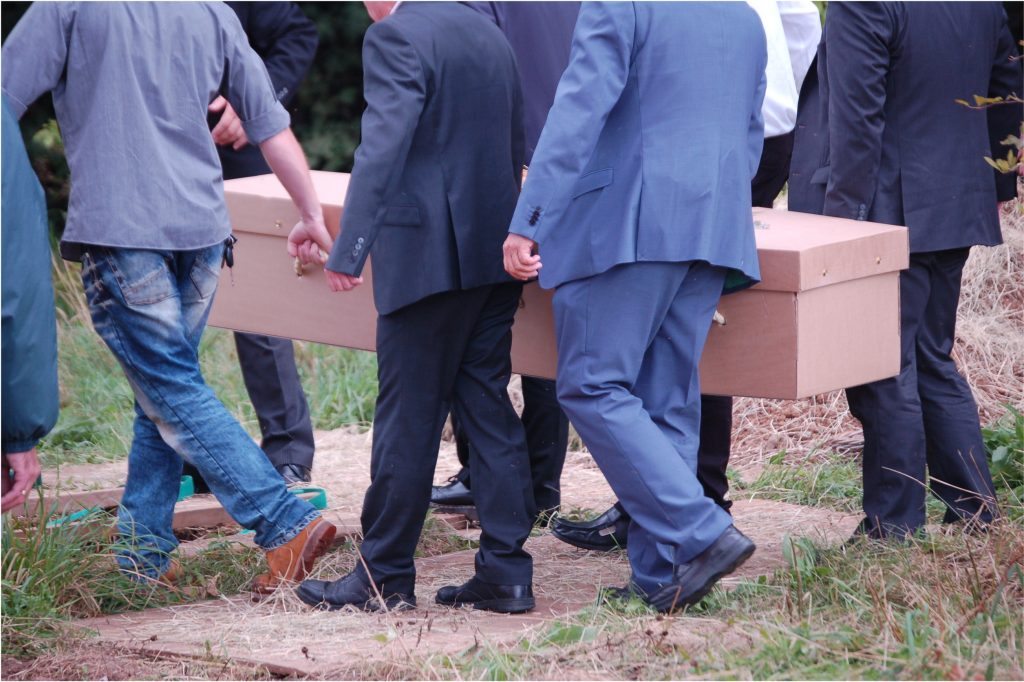
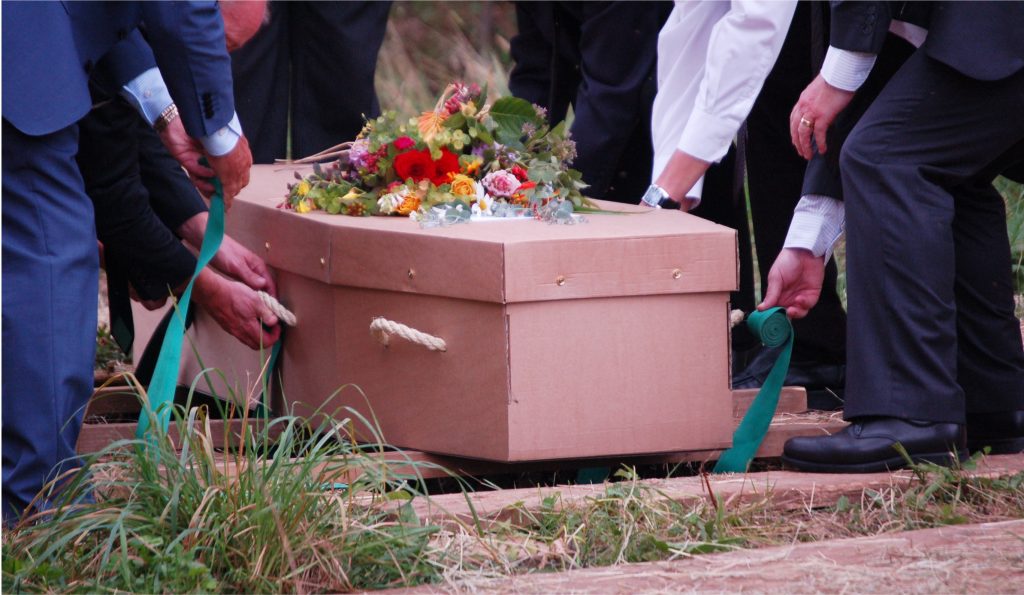
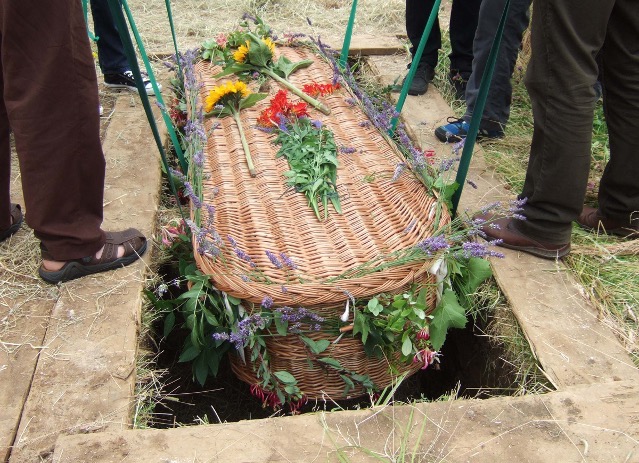
We’d love your support
As a Community Interest Company, the Good Funeral Guide exists to benefit the community and to fulfil a social purpose. We rely on donations and goodwill to continue to do our work.
If you find our website helpful, please consider making a donation to help keep us going.
And if you’d like to support us while joining a community of like-minded people, why not consider joining the Good Funeral Guild?
